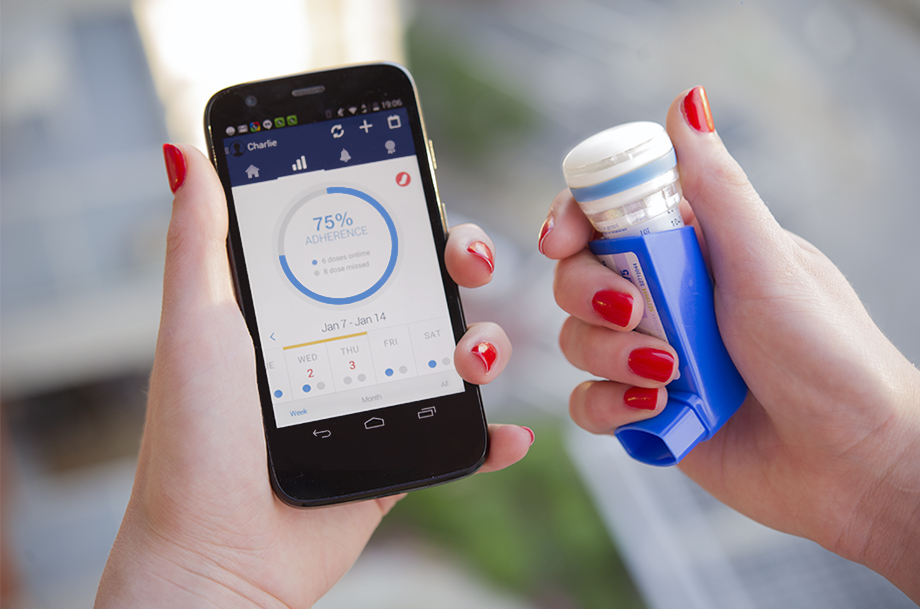Introduction to Smart Inhalers
Smart inhalers are the latest technological advancement in how asthma medication is delivered. By integrating electronic sensors and connectivity, smart inhalers aim to improve treatment outcomes for people with asthma.
How Do Smart Inhalers Work?
At their core, smart inhalers function very similarly to traditional inhalers. They contain the same medication in either an aerosol or dry powder formulation. However, smart inhalers have electronic components built into the device that can track important usage data.
Sensors inside the Smart Inhalers are able to detect when the device has been actuated or fired. This allows the inhaler to accurately log each time medication is administered. Additional sensors may identify the volume of medication dispensed from each actuation. All of this usage data is stored directly within the inhaler’s memory.
Connecting to Digital Health Apps
For the data collected by smart inhalers to be useful, it needs a way to be accessed. This is where connectivity comes in. Many smart inhalers have built-in Bluetooth capabilities that allow them to pair with a companion smartphone app.
Once paired, all of the inhaler usage data is automatically uploaded to the app through the Bluetooth connection. This gives patients access to reports on their medication taking history. It also lets care teams remotely monitor how consistently medications are being used between appointments. Some apps even use algorithms to identify patterns in usage that may signal worsening asthma control.
Improving Adherence and Outcomes
Non-adherence to controller asthma medications is a major challenge that hinders treatment effectiveness. It is estimated that over half of people with asthma do not take their preventive inhalers as prescribed. The remote monitoring abilities of smart inhalers aim to directly address this issue.
Studies have found that simply knowing their inhaler usage is being tracked can encourage patients to use medications as instructed more faithfully. Seeing usage data visualized in an app also helps patients and providers easily identify if and when doses are being missed. This greater accountability and awareness of treatment patterns has been linked to improved adherence and clinical outcomes for some users of smart inhalers.
Customization and Personalization
As computational power continues to shrink in size, smart inhalers are gaining additional capabilities beyond basic connectivity and data logging. Some models now allow for customization of alerts and reminders directly within the device’s interface or companion app.
For example, the app may remind a user if it has been several hours since their last recorded inhaler actuation. Or it could notify their provider if usage falls significantly below the prescribed regimen. Patients may also be able to enter information about environmental triggers or symptoms to further personalize alerts. Over time, artificial intelligence-based algorithms analyzing usage patterns could tailor reminders automatically without human input.
Drawbacks and Limitations
While promising, smart inhalers in their current form do have limitations that may prevent universal adoption just yet. The most immediate hurdle is the higher upfront cost compared to traditional inhalers. Insurance reimbursement for smart device features has not been standardized.
Connectivity reliability can also be an issue depending on cellular coverage in a patient’s location. If the inhaler cannot regularly upload data, its remote monitoring benefits are diminished. Some users may also be concerned about privacy, data security, and how their health information is shared digitally through apps and networks.
Battery life and the need to regularly recharge integrated electronics present design challenges. This could be burdensome for certain patient populations. And there remains uncertainty around how much direct clinical benefits smart inhalers may provide beyond improved adherence rates alone. Additional research is still needed to fully evaluate their full impacts on outcomes.
Future Outlook
As technology costs continue falling and connectivity becomes more pervasive, many of the current limitations holding back smart inhalers should lessen over time. This will smooth their integration into routine clinical care. Future iterations could even link direct to electronic medical records for a single interfaced patient experience.
For now, these systems show great promise in addressing non-adherence which weakens so many asthma treatment plans. If reliability and availability improve while retaining usage tracking features proven to motivate better medication taking, smart inhalers may revolutionize asthma management for many patients globally. Continued development will be important to maximize their potentials for improving quality of life.
*Note:
1. Source: Coherent Market Insights, Public sources, Desk research
2. We have leveraged AI tools to mine information and compile it

